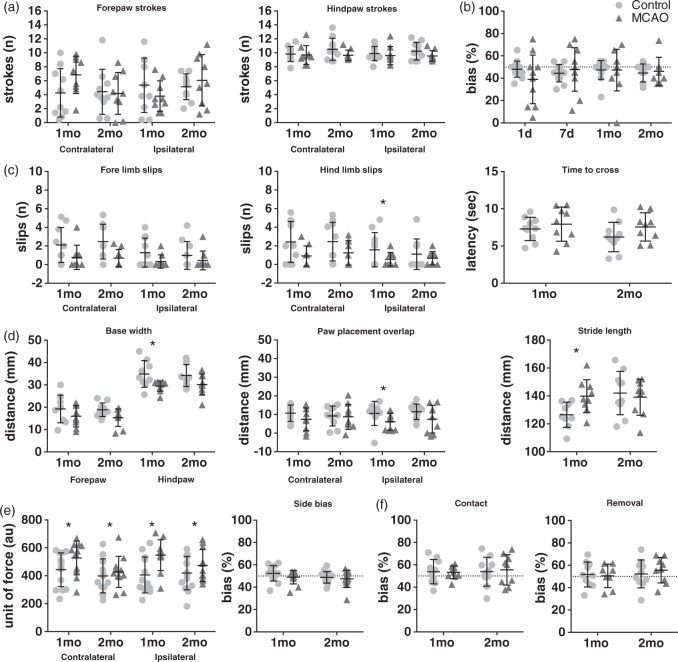Figure 4.
Summary of tests in which the MCAO animals exhibited no deficits (b and f) or tests that were counter-intuitive (a, c, d, and e). (a) Number of fore and hindpaw strokes during swimming analysis at one and two months (Cohort 2: n = 10 Control, n = 9 MCAO). (b) Forelimb exploring bias in the cylinder task (Cohort 1: at one day: n = 14 Control, n = 11 MCAO, at seven days: n = 12 Control, n = 11 MCAO, at one month: n = 14 Control, n = 11 MCAO, and at two months n = 10 Control, n = 8 MCAO). (c) Hind and forepaw slips and time to cross the tapered balance beam at one and two months(Cohort 2: n = 10 Control, n = 9 MCAO). (d) Paw base width, paw placement overlap, and stride length during gait analysis at one and two months (Cohort 2: at one month: n = 9 control, n = 9 MCAO, and at two months: n = 10 Control, n = 9 MCAO). (e) Force required to release and side bias during grip strength at one and two months(Cohort 1: n = 14 Control, n = 11 MCAO). (f) Contact and removal bias during adhesive removal at one and two months(Cohort 2: n = 10 Control, n = 9 MCAO, except at one month for remove: n = 9 Control, n = 9 MCAO). Data are expressed as means ± SD with individual values in the scatter plots. Note: The dotted line represents 50% bias (no preference for either side or paw). * = p < 0.05, ** = p < 0.01, *** p < 0.001.

